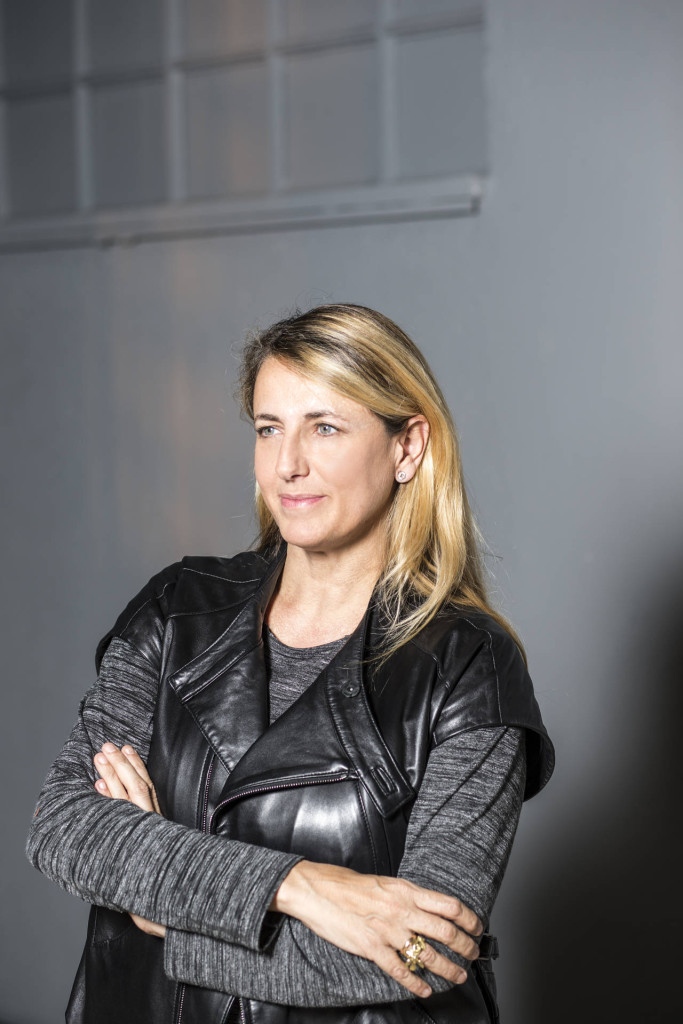Paco Perez is possibly the world’s hottest chef right now—the protege of Ferran Adrià, whose restaurant el Bulli put Spanish molecular gastronomy on the world map, and a winner of two Michelin stars for his own Miramar restaurant and hotel in northeastern Spain. Patricia Urquiola, meanwhile, is one of the world’s most in-demand designers and architects, with the Mandarin Oriental Hotel Barcelona under her belt and a roster of clients including Alessi, B&B Italia, Flos, Foscarini and Kartell clamouring for her attention. Last year these two Spaniards found themselves accidentally collaborating on Das Stue, an ambitious venture to turn a former landmark Danish embassy building in Berlin into a high-end hotel. What they created turned out to be not just the city’s— but one of Europe’s—coolest hotels.
Hotelier International: Paco, why did you choose Berlin as the place to open your first restaurant outside Spain? And why did you choose to open it inside a hotel?
Paco Perez: It was not as if I were sitting down being asked to choose between lots of different projects. This unique project happened to be offered to me, and several factors appealed about it. Berlin is a great, open, cosmopolitan city, with a recent history, and it will continue making an important gastronomic contribution. A city like this deserves diversity, and I think a project of this magnitude deserves to have a typical Iberian restaurant at its forefront!
HI: Patricia, what was your overall design mission for Das Stue and what was the look you were attempting to create? Did you want Spanish flourishes?
Patricia Urquiola: Actually it was coincidence that Paco and I are both from Spain. I was interested in creating something very Berlin-centric, seeing the Siegessäule column from your room and at the same time being in contact with nature — the park facing the hotel, away from traffic. At the same time it’s a sort of living room, a meeting place for guests and local people. I also wanted to respect the identity of the space, the historical element of the building. I’ve tried to respect the original marble stone of the façade and the atrium, using wood, travertinestone, resins, micro concrete, opaque tiles and copper, jaquard textile and custom design. Some of the original parquet has been restored.
HI: Paco, solely from a chef’s perspective, how important is the design of the restaurant and bar areas to the food on the menu?
PP: It is always important that the design end should express the emotional level displayed in the restaurant. In short, a restaurant should always be like a great perfume set in a beautiful bottle that is more beautiful than itself. Whatever warmth and emotion you can convey or express in a space—whatever makes people feel at home ultimately—is what ends up defining design. Ultimately the most important thing for any restaurantto capture the whole essence of the food and transmit that inside whatever space you have.
HI: Your restaurant here, Cinco, is already legendary for its 25-course avant-garde tasting menus. How would you define your cuisine?
PP: To me all cooking should be consistent, creative, humble and hard- working, with good, simple ingredients at its core. I like experimenting with different tastes, textures and aromas. I think that our creations are simple, but never simplistic, and they are prepared according to the rules of honest craftsmanship. Menus are written plainly, and there are no gimmicks or extravagant flourishes.
HI: Your kitchen is visible from the eating area—a bit of theatricality which is quite unusual for Berlin. Why was this important to you?
PP: The open kitchen is definitely part of a more comprehensive concept of an experience that people can enjoy in this space. It is also to let people not only see what we create but also how we doit.
HI: Patricia, can you tell us how the aspects of the food techniques must have inspired you as much as the location and history?
PU: I think the hotel’s design highlight is the personalisation of each of the different areas. The signature restaurant has two souls, one part which is more joyful, like a big chef’s table, looking at the kitchen and protected by a ceiling of Tom Dixon’s hanging copper lamps and copper kettles. This accentuates the fine dining experience of the restaurant, particularly Paco’s avant- garde cuisine. In a second part, slatted walls and skylights frame a more casual, all-day dining experience with a soft glow. But then the private dining room overlooking the park is decorated with animal sculptures, which links the room to the hotel’s surroundings too.


